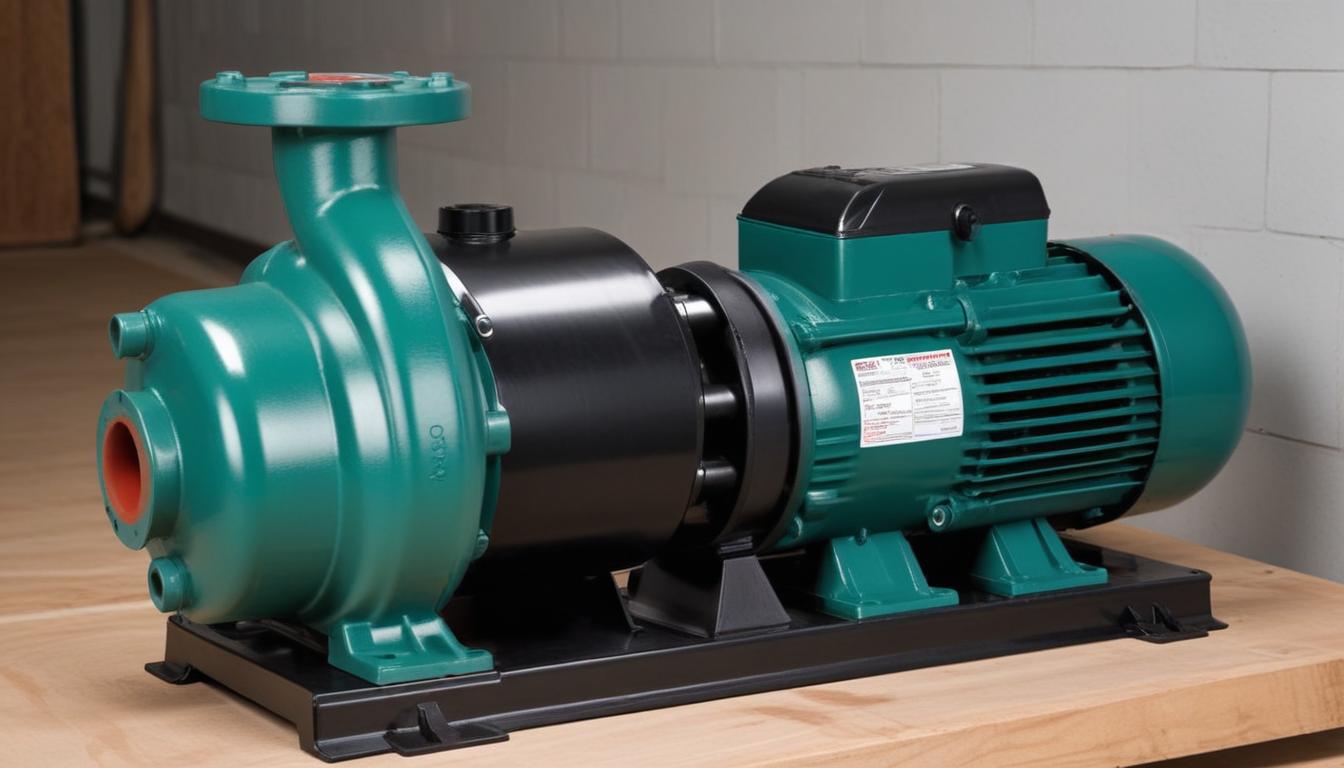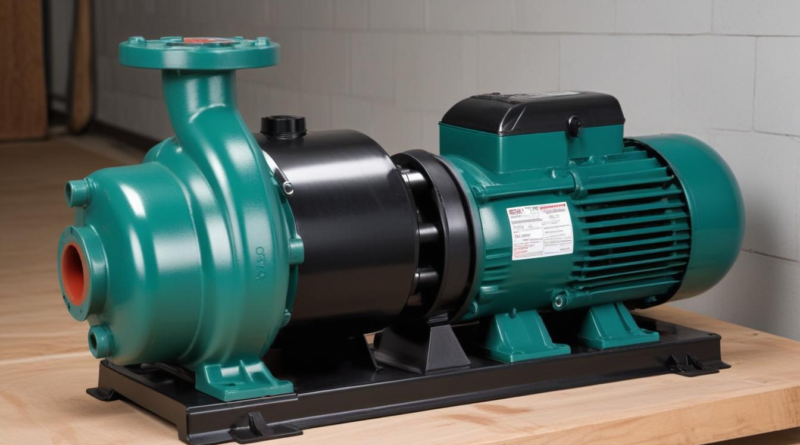how to choose a pump based on efficiency
Pump efficiency is a critical metric that determines how effectively a pump converts electrical or mechanical energy into hydraulic energy to move fluids. It is expressed as a percentage, representing the ratio of the useful hydraulic power imparted to the fluid to the total power consumed by the pump. High pump efficiency indicates minimal energy loss, leading to cost savings and reduced environmental impact.
Understanding pump efficiency involves analyzing several key components:
| Component | Description |
|---|---|
| Hydraulic Power | The energy transferred to the fluid, calculated as flow rate multiplied by the total head. |
| Mechanical Power | The energy lost due to friction and other mechanical factors within the pump. |
| Electrical Power | The total energy consumed by the pump’s motor. |
To accurately assess pump efficiency, consider the following criteria:
- Flow Rate: The volume of fluid the pump can move per unit of time.
- Head: The height to which the pump can raise the fluid.
- Power Consumption: The amount of energy required to operate the pump.
- Energy Efficiency Standards: Compliance with industry standards and regulations.
Efficiency can be calculated using the formula:
- Determine the hydraulic power: Hydraulic Power = Flow Rate × Total Head.
- Measure the input power consumed by the pump.
- Apply the efficiency formula: Efficiency (%) = (Hydraulic Power / Input Power) × 100.
Selecting the right pump involves evaluating these factors to ensure optimal performance and energy utilization. Pumps with higher efficiency ratings not only reduce operational costs but also contribute to sustainability by minimizing energy consumption.
Maintaining high pump efficiency requires regular monitoring and maintenance to address wear and tear, ensure proper alignment, and prevent leaks or blockages. By prioritizing pump efficiency in the selection process, organizations can achieve reliable fluid handling while optimizing energy usage.
types of efficient pumps
Efficient pump selection relies on understanding the various types of pumps available and how their design impacts performance and energy usage. Below are some of the most efficient pump types commonly used across industries:
| Pump Type | Key Features | Applications |
|---|---|---|
| Centrifugal Pumps |
|
Water supply, HVAC systems, chemical processing. |
| Axial Flow Pumps |
|
Irrigation, flood control, large-scale water transfer. |
| Positive Displacement Pumps |
|
Oil and gas, hydraulic systems, chemical dosing. |
| Turbine Pumps |
|
Petroleum refining, wastewater treatment, power generation. |
| Magnetic Drive Pumps |
|
Chemical processing, pharmaceuticals, food and beverage. |
When selecting an efficient pump, it’s essential to consider the specific criteria related to your application:
- Flow Requirements: Determine the necessary flow rate and ensure the pump type can meet these demands efficiently.
- Head Pressure: Assess the required head pressure to ensure the pump can deliver the fluid to the desired height or distance.
- Fluid Characteristics: Consider the viscosity, temperature, and corrosiveness of the fluid to select a pump material and design that minimizes energy loss.
- Energy Consumption: Evaluate the pump’s power usage in relation to its efficiency to optimize operational costs.
- Maintenance Needs: Choose a pump type that aligns with your maintenance capabilities and minimizes downtime.
By carefully analyzing these factors and understanding the strengths of each pump type, you can make an informed selection that maximizes pump efficiency and ensures reliable performance in your specific application.
factors affecting efficiency
Several elements influence the overall performance of a pump, directly impacting its efficiency. Understanding these factors is essential for making informed decisions during the pump selection process. Key considerations include:
| Factor | Impact on Pump Efficiency |
|---|---|
| System Design | The layout of the piping system, including pipe diameter, length, and the number of fittings, can create resistance that affects the pump’s ability to maintain desired flow rates and head pressure. Poor system design may lead to increased energy consumption and reduced efficiency. |
| Pump Selection | Selecting a pump that matches the specific flow and head requirements is crucial. An oversized or undersized pump can operate inefficiently, leading to excessive energy use and potential mechanical issues. |
| Operating Conditions | Fluctuations in flow rate and head pressure can cause the pump to operate outside its optimal efficiency range. Maintaining stable operating conditions ensures consistent performance and energy utilization. |
| Maintenance Practices | Regular maintenance, including inspecting and replacing worn components such as impellers and seals, is vital for sustaining pump efficiency. Neglecting maintenance can result in increased friction losses and energy consumption. |
| Fluid Properties | The viscosity, temperature, and corrosiveness of the fluid being pumped affect the energy required for movement. High-viscosity or corrosive fluids can lead to greater wear and energy losses, reducing pump efficiency. |
| Energy Sources and Motor Efficiency | The efficiency of the pump’s motor and the quality of the electrical supply impact overall pump performance. High-efficiency motors and stable power sources contribute to better energy utilization. |
| Installation Factors | Proper alignment and secure mounting of the pump minimize vibrations and mechanical stresses, ensuring smooth operation and maintaining efficiency. Misalignment can cause energy losses and increase wear on pump components. |
When evaluating pump efficiency, it is essential to consider these factors within the context of your specific application. Implementing the following criteria can help guide the selection process:
- Flow Rate and Head Requirements: Ensure the pump can consistently meet the necessary flow and head specifications under varying conditions.
- Energy Consumption: Assess the pump’s power usage relative to its performance to identify energy-efficient options.
- Durability and Maintenance: Choose pumps that offer longevity and require minimal maintenance to maintain high efficiency over time.
- Compatibility with Fluid Characteristics: Select pumps made from materials that can handle the specific properties of the fluid, such as corrosiveness and temperature.
- Installation Environment: Consider the installation site’s constraints, including space, alignment capabilities, and vibration control, to support efficient operation.
By meticulously analyzing these factors, you can enhance pump efficiency, reduce operational costs, and ensure reliable performance tailored to your application’s unique demands.
calculating energy costs
 Calculating energy costs is a pivotal aspect of pump selection, directly influencing both operational expenses and overall system efficiency. Understanding how to accurately assess these costs enables organizations to make informed decisions that optimize energy usage and reduce long-term expenditures.
Calculating energy costs is a pivotal aspect of pump selection, directly influencing both operational expenses and overall system efficiency. Understanding how to accurately assess these costs enables organizations to make informed decisions that optimize energy usage and reduce long-term expenditures.
To effectively calculate energy costs associated with pump operation, consider the following steps and factors:
- Determine the Pump’s Power Consumption:
- Identify the motor’s horsepower (HP) or kilowatts (kW) rating.
- Consider the pump efficiency to understand the actual energy used for fluid movement versus total energy consumed.
- Calculate the Operating Hours:
- Estimate the number of hours the pump will operate daily, monthly, and annually.
- Account for variations in operation based on demand fluctuations.
- Apply the Energy Cost Formula:
Parameter Unit Example Value Power Consumption kW 15 kW Operating Hours hours/year 8,000 hours Energy Cost $/kWh $0.10 The formula to calculate annual energy costs is:
Annual Energy Cost = Power Consumption (kW) × Operating Hours (hours/year) × Energy Cost ($/kWh)
Using the example values:
Annual Energy Cost = 15 kW × 8,000 hours × $0.10 = $12,000
- Factor in Pump Efficiency:
- Higher pump efficiency reduces the actual power consumption for the required hydraulic performance.
- Adjust calculations to reflect the efficiency percentage:
Parameter Value Adjusted Value Power Consumption 15 kW 15 kW / 0.85 (85% efficiency) ≈ 17.65 kW Annual Energy Cost $12,000 17.65 kW × 8,000 hours × $0.10 ≈ $14,120 This adjustment highlights the significance of pump efficiency in energy cost calculations. Selecting a more efficient pump can result in substantial savings over time.
- Consider Variable Operating Conditions:
- Assess how changes in flow rate and head pressure impact energy consumption.
- Utilize pump performance curves to model energy usage under different scenarios.
- Incorporate Maintenance and Downtime Costs:
- Factor in potential costs related to maintenance activities that ensure sustained pump efficiency.
- Estimate costs associated with unexpected downtime due to inefficient pump operation.
By systematically analyzing these components, organizations can develop a comprehensive understanding of the energy costs associated with different pump options. This approach enables the selection of pumps that not only meet performance requirements but also align with energy efficiency goals.
Additionally, leveraging energy cost calculators and software tools can enhance the accuracy of these calculations. These tools often incorporate real-time data and advanced algorithms to provide detailed insights into potential savings and return on investment (ROI) for various pump selections.
Implementing energy-efficient pumps contributes to significant cost reductions and supports sustainability initiatives by minimizing energy consumption and associated environmental impacts. Therefore, integrating thorough energy cost assessments into the pump selection criteria is essential for achieving both economic and environmental objectives.
maintaining optimal performance
Maintaining the performance of a pump to ensure sustained efficiency involves a combination of routine inspections, timely maintenance, and proactive monitoring. Implementing a comprehensive maintenance strategy not only extends the lifespan of the pump but also optimizes its operational costs and reliability. Key practices to uphold optimal pump performance include:
- Regular Inspections: Conduct periodic checks to identify signs of wear, corrosion, or damage in critical components such as impellers, seals, and bearings. Early detection of issues can prevent major failures and maintain high efficiency.
- Lubrication: Ensure that all moving parts are adequately lubricated to reduce friction and prevent overheating. Using the appropriate lubricant as per manufacturer recommendations is essential for minimizing energy losses.
- Alignment and Balancing: Proper alignment of the pump and motor shafts is crucial to prevent undue stress and vibrations. Regularly verify alignment using precision tools and balance rotating components to ensure smooth operation.
- Seal and Gasket Maintenance: Inspect seals and gaskets for leaks and perform replacements as necessary. Effective sealing prevents fluid leaks that can compromise pump efficiency and lead to environmental hazards.
- Cleaning and Debris Removal: Accumulate debris and buildup within the pump can obstruct flow and reduce efficiency. Implement routine cleaning schedules to remove contaminants and maintain unobstructed fluid pathways.
- Monitoring System Performance:
- Utilize sensors and automated monitoring systems to track key performance indicators such as flow rate, pressure, and vibration levels in real-time.
- Analyze performance data to detect deviations from optimal operating conditions, enabling timely interventions to maintain efficiency.
- Temperature Control: Maintain operating temperatures within specified ranges to prevent overheating, which can degrade pump components and reduce efficiency. Implement cooling systems or adjust operational parameters as needed.
- Scheduled Maintenance:
- Develop and adhere to a maintenance schedule based on manufacturer guidelines and operational data.
- Include tasks such as component replacement, system recalibration, and comprehensive performance testing to ensure ongoing efficiency.
Implementing a robust maintenance program involves several criteria to prioritize tasks and allocate resources effectively:
| Criteria | Description |
|---|---|
| Criticality of Components | Identify and focus on parts that have the most significant impact on pump performance and efficiency. |
| Operational Hours | Assess the pump’s usage patterns to determine maintenance frequency based on operating hours and conditions. |
| Historical Performance Data | Analyze past performance metrics to predict potential issues and schedule preventive maintenance accordingly. |
| Environmental Factors | Consider elements such as ambient temperature, humidity, and exposure to corrosive substances that may affect pump longevity and efficiency. |
| Resource Availability | Ensure that necessary tools, spare parts, and skilled personnel are available to perform maintenance tasks without delays. |
By adhering to these maintenance practices and criteria, organizations can sustain high pump efficiency, reduce downtime, and achieve long-term cost savings. Regular maintenance not only preserves the mechanical integrity of the pump but also ensures that it operates within the optimal parameters defined during the pump selection process. This holistic approach to maintenance is essential for maximizing the return on investment and maintaining reliable fluid handling in various industrial applications.



